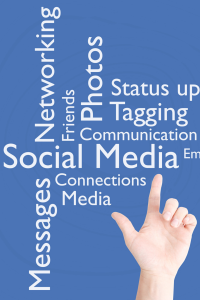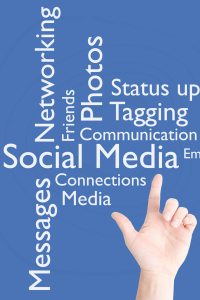What to know about some of today’s most popular social media platforms
Social media is a way for brands to directly reach their target audience. For a small business owner, taking advantage of different social media platforms can mean connecting directly with consumers, but it’s not always easy to manage all of the different verticals. Here is what small businesses need to know right now about the most popular social media platforms.
![]() Facebook is still going strong as the most popular social network, with 1.19 billion users worldwide. It’s a wonderful platform for businesses to increase brand awareness and inspire conversations with customers. However, to succeed as a business on Facebook, focus on user engagement. Use images, keep the copy short and ask questions to start conversations. Facebook posts with photos generate 120% more engagement than posts without. Question posts have almost double the engagement of non-question posts and copy shorter than 250 characters has 60% more engagement than longer posts. The “share” function of Facebook plays a large roll in increasing engagement. Those who play by the rules with Facebook will certainly see results, both in the form of customer engagement and ROI.
Facebook is still going strong as the most popular social network, with 1.19 billion users worldwide. It’s a wonderful platform for businesses to increase brand awareness and inspire conversations with customers. However, to succeed as a business on Facebook, focus on user engagement. Use images, keep the copy short and ask questions to start conversations. Facebook posts with photos generate 120% more engagement than posts without. Question posts have almost double the engagement of non-question posts and copy shorter than 250 characters has 60% more engagement than longer posts. The “share” function of Facebook plays a large roll in increasing engagement. Those who play by the rules with Facebook will certainly see results, both in the form of customer engagement and ROI.
Pros:
- Advertising: Use Facebook ads to promote page, increase likes and visibility to a completely targeted and customized audience.
- Review: Customers can write reviews of your business, which appear as a sidebar application on Facebook page
- Likes & Comments: Sharing content and receiving feedback in the form of likes, comments or shares is a great way to spread brand awareness and interact with consumers
Cons
- Algorithms: Posts that aren’t sponsored aren’t appearing in newsfeeds making it difficult to reach your audience.
- Time commitment: It’s important to manage page, be aware of fan comments, complaints, suggestions and more
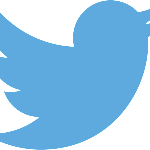 The best thing about Twitter is that it’s constantly growing. It’s widely adopted and used for everything from marketing to personal use. With over 288 million active users, Twitter is a fantastic platform for businesses to make their voices heard and interact with customers. While it may seem overwhelming at first—what’s a hashtag anyway— it’s the primary platform for users to instantly stay up-to-date on brand information and company news. On Twitter, stay relevant and have personality because this social media platform is all about building relationships, and thanks to the signature hashtags, there is no better platform to start or join conversations. With the search function, businesses have the ability to build relationships with influencers and communicate with their customer base. Marketers can also target their tweets with paid advertising, ensuring their content gets in front of the right eyeballs.
The best thing about Twitter is that it’s constantly growing. It’s widely adopted and used for everything from marketing to personal use. With over 288 million active users, Twitter is a fantastic platform for businesses to make their voices heard and interact with customers. While it may seem overwhelming at first—what’s a hashtag anyway— it’s the primary platform for users to instantly stay up-to-date on brand information and company news. On Twitter, stay relevant and have personality because this social media platform is all about building relationships, and thanks to the signature hashtags, there is no better platform to start or join conversations. With the search function, businesses have the ability to build relationships with influencers and communicate with their customer base. Marketers can also target their tweets with paid advertising, ensuring their content gets in front of the right eyeballs.
Pros
- Interactive: Ensure content goes to specific people by “@” mentioning users.
- Search: You can search keywords or #hashtags to find out what people are talking about, giving the business an opportunity to join the conversation
- 140 characters: The restricted content forces users to keep it concise, witty and relevant.
Cons
- Moment in time: Unless a user “favorites” a tweet to save it for later, or Retweets it, sending it out to more followers, one tweet usually has a lifespan of 18 minutes before it’s lost in the Twitter feed
- Time Consuming: Since Twitter is such an interactive platform, brands should carefully monitor accounts for comments, questions and complaints, which tends to be time consuming.
 With over 200 million users and 50 times the engagement rate of Facebook, the photo-sharing app is quickly growing faster than any other social network program. For a business to succeed on Instagram, it’s important to post frequently and stay relevant and updated, while showcasing some personality. With the addition of Instagram videos, users can even share 15-second snaps. But this tool isn’t quite as business-friendly as some other social media platforms, as there is no way to share usable links, and all content must be posted from a mobile device. There is no option to schedule posts in advance.
With over 200 million users and 50 times the engagement rate of Facebook, the photo-sharing app is quickly growing faster than any other social network program. For a business to succeed on Instagram, it’s important to post frequently and stay relevant and updated, while showcasing some personality. With the addition of Instagram videos, users can even share 15-second snaps. But this tool isn’t quite as business-friendly as some other social media platforms, as there is no way to share usable links, and all content must be posted from a mobile device. There is no option to schedule posts in advance.
Pros
- Mobile application: Instagram was created specifically for mobile devices. Since a higher percentage of users now use smartphones and tablets over computers, it’s a great place to share content and be relevant with your audience
- User generated content: Content created by users has a greater chance of engagement, so why not try a photo contest to boost brand awareness and fan engagement?
- Visual beauty: Photos are important and now, they’re the best for garnering brand engagement.
Cons
- No links in captions: Currently, links don’t work in photo captions. Many brands post links in their bio, but constantly changing links can be a tedious task and appear confusing to users
- Publishing: Only able to post directly from Instagram app, so there is no opportunity to schedule posts through outside publishers.
- Limited advertising: Inability to “sponsor” posts or tweets as with other social networks. Instagram relies heavily on fan acquisition, engagement and word-of-mouth
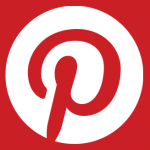 While Pinterest is a more visual platform, it’s a great tool for business to promote a concept or brand. Users go on Pinterest for inspiration. They want to know what to buy, where to buy it, what to make for dinner and what fashion is trending for the fall. The great thing about brands being on Pinterest is they have the ability to link out to different landing pages. So, while one “board” may seem like a catalog of images, it’s actually giving users the ability to find something they like and be directed exactly where to buy it or engage with the brand further. Users can pin and repin posts to boards, which is like the equivalent of a Facebook share.
While Pinterest is a more visual platform, it’s a great tool for business to promote a concept or brand. Users go on Pinterest for inspiration. They want to know what to buy, where to buy it, what to make for dinner and what fashion is trending for the fall. The great thing about brands being on Pinterest is they have the ability to link out to different landing pages. So, while one “board” may seem like a catalog of images, it’s actually giving users the ability to find something they like and be directed exactly where to buy it or engage with the brand further. Users can pin and repin posts to boards, which is like the equivalent of a Facebook share.
Pros
- Great for infographics: There are no image size restrictions on Pinterest like there is on Facebook, Twitter or Instagram, so sharing big, beautiful, contextual images is ideal for Pinterest.
- Repin / Pin It buttons: With the click of a button, users can share posts and pins to their own pages.
Cons
- Less conversational: Not much engagement can happen as easily on Pinterest as other platforms. While businesses have the ability to comment as their brand, many people on Pinterest are there for images and repinning, not joining conversations
- Gender differences: If your main target audience is composed of mostly men, you’re not going to get many leads from Pinterest. The Pinterest audience skews 4:1 female
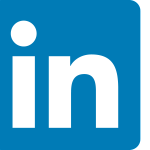 Having a presence on LinkedIn as a business is important. The ability to share job postings, company descriptions and employer research is beneficial not only to fellow employees but to consumers checking out your business. What may have begun as a website for “old fashioned networking” has turned into a place to connect with consumers and join groups or discussions all the while sharing your content in front of other like minded professionals.
Having a presence on LinkedIn as a business is important. The ability to share job postings, company descriptions and employer research is beneficial not only to fellow employees but to consumers checking out your business. What may have begun as a website for “old fashioned networking” has turned into a place to connect with consumers and join groups or discussions all the while sharing your content in front of other like minded professionals.
Pros
- Robust search: If you’re looking to hire someone for your business, using LinkedIn is one of the best internet tools out there
- Establishes credibility: As a professional social networking site, having your content shared by such established individuals, gives credit to the type of work you’re doing as a business and allows you to collaborate with others in the field
- InMail: For a cost, this premium feature allows you to directly contact business individuals. If the user doesn’t respond, you get your “credit” back to be used at a later time. It’s a great tool for direct marketing and needing to contact someone immediately
Cons
- Fewer followers: With only 50 million followers, there’s a slight chance you won’t be connecting with your target audience or expand reach
- Less Interaction: While you are able to “like” and “comment” on posts, it’s not used as much as social interaction on other channels such as Facebook or Twitter
Google+
 Google+ is a very individual and friendly social networking platform, where hashtags and content have major search value. In fact Google+ is probably the most ideal network for sharing content. However, where businesses fail when working with Google+, is only posting once or twice a month. Content on Google+ should be updated regularly, with hashtags and even taking advantage of Google Hangouts.
Google+ is a very individual and friendly social networking platform, where hashtags and content have major search value. In fact Google+ is probably the most ideal network for sharing content. However, where businesses fail when working with Google+, is only posting once or twice a month. Content on Google+ should be updated regularly, with hashtags and even taking advantage of Google Hangouts.
Pros
- Interface: The clean, easy-to-use and uncluttered environment make posting and sharing content on Google+ quite simple.
- +1 button: Social linking, +1’ing content and resharing all enables high reach for content.
- Unique features: Hangouts and communities are two of the biggest features of Google+. Start a “hangout” with your users and give yourself the ability to do face-to-face brand marketing. Create a “community” where your users can join together and discuss or share specific content
Cons
- Limited audience: It is much more difficult to spread awareness about your brand solely on Google+ since it’s not as well-utilized as other networks.
- Limited brands: Quite simply, there aren’t as many brands utilizing Google+ as there should be. Without an audience or without competitive research, it’s tough for marketers to share their content as easily on Google+ as they can on other social networks
Questions on how to approach social media for your business? Let's Yak.
About Yakkety Yak:
 Yakkety Yak is a full-service content marketing company that produces custom written content for businesses, including blogs, website copy, case studies, newsletters, social media marketing, public relations and more. We want to be an extension of your marketing team to help you connect to end users and decision influencers, based on the principle of one common voice, for one target audience. Yakkety Yak helps you find the words you were looking for —so let’s YAK.
Yakkety Yak is a full-service content marketing company that produces custom written content for businesses, including blogs, website copy, case studies, newsletters, social media marketing, public relations and more. We want to be an extension of your marketing team to help you connect to end users and decision influencers, based on the principle of one common voice, for one target audience. Yakkety Yak helps you find the words you were looking for —so let’s YAK.

